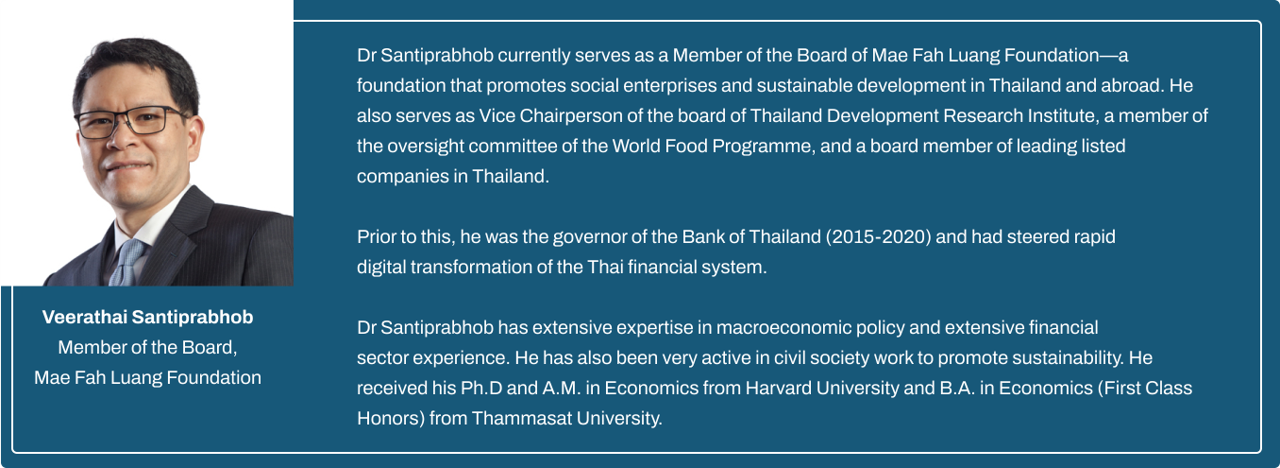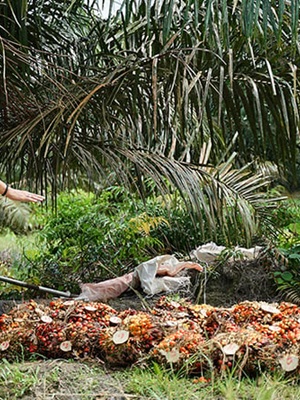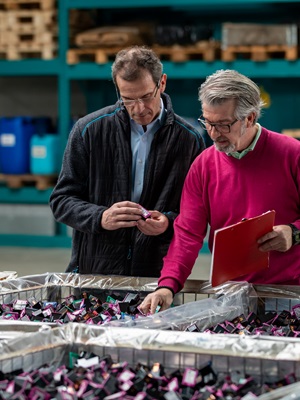The global food industry faces a pressing challenge: food waste. And a circular economy presents an innovative and holistic approach to address this issue. In this article, we explore the role of the circular economy in tackling food waste, analyse the challenges it poses to food waste management, assess the viability of implementing circular practices in the food industry, and discuss the achievability of a circular food industry. We also debunk the myths surrounding the biodegradability of food waste and highlight the importance of our behaviour regarding food waste.
1. Circular economy in the food system
According to the Food and Agriculture Organization (FAO), one-third of the world's agricultural land, equivalent to 4.8 billion hectares in 2018, was dedicated to cropland. Production losses from post-harvest to distribution can reach up to 25%, varying across different food chains. It is evident that food chains generate significant waste and have environmental impacts throughout their various stages, including land production, animal farming, food processing, transportation, market activities, and consumption. These stages result in the disposal of organic residues, packaging waste, greenhouse gases, and wastewater, representing untapped potential resources. In 2019, farming accounted for 13.35% of the global food chain's carbon footprint (CO2 greenhouse gas emissions), while land use change contributed 6.49%, and pre and post-production activities contributed 10.79%. These sectors play a pivotal role as the main contributors to environmental emissions within the food chain. In response, global initiatives have been implemented to reduce these widespread impacts and foster the development of sustainable production systems.
This is where a circular economy practice can offer a powerful systems solution framework for the food industry to tackle food waste. It offers a system that minimises waste, optimises resource utilisation, and promotes sustainability. Adapting our current food systems to a more circular approach can provide significant benefits to tackle climate change and to increase biodiversity, as well as to provide nutritious food for everyone. A circular economy can help build a food system that guarantees that the food we produce never creates waste. It can eliminate food waste, redistribute access to surplus edible food and recycle inedible food by-products into inputs for new products. In very simple terms, it’s building a closed loop system that is regenerative and sustainable.
As it stands, the current food system is not sustainable; industrial farming has become a leading source of GHG emissions and biodiversity decline. As mentioned, a third of the food produced is wasted annually whilst nearly 10% of the world’s population still goes hungry. Therefore, one key aspect to a circular food system is adopting sustainable agricultural practices. Organic farming and regenerative agriculture prioritise soil health, reduce chemical usage, and promote biodiversity. Technological advancements such as precision farming, vertical farming, and hydroponics enhance crop yields while minimising resource inputs.
Another important aspect to a circular food system is to encourage responsible consumption to reduce food waste. Educating consumers about mindful food consumption practices, including meal planning, proper storage techniques, and portion control, can significantly minimise waste. Businesses can contribute by offering smaller portion sizes, implementing "ugly food" campaigns to reduce aesthetic food waste, and supporting composting and food recycling initiatives.
Similarly, food recovery and redistribution initiatives play a crucial role. Collaborative efforts between food banks, shelters, and community organisations ensure edible food reaches those in need. Technologies like anaerobic digestion and bioconversion can transform organic waste into valuable resources while reducing greenhouse gas emissions.
2. Challenges of the circular approach
Although implementing a circular economy in food waste management sounds optimal in the sustainability discourse, multiple challenges arise. Such as:
Infrastructure and Investment: Establishing a robust network of food recovery and recycling facilities requires significant capital investment and policies. Governments and private entities must collaborate to build the necessary infrastructure and provide financial incentives for circular practices.
Behaviour Change: Encouraging responsible consumption habits and raising awareness about the impacts of food waste necessitate sustained education campaigns and incentives. Overcoming deeply ingrained behaviours and mindsets poses a significant challenge but is critical for the success of circular initiatives.
Regulatory Barriers and Fragmented Policies: Inconsistent regulations and fragmented policies hinder the implementation of circular practices. Governments must create an enabling environment through supportive policies, including tax incentives, mandatory reporting on food waste, and the establishment of recycling and composting infrastructure.
3. Viability and solutions
We have introduced the concept of circular economy and the relevant challenges in the context of food waste, but is it actual viable? We believe it is and here are some of the reasons of how and why it would be beneficial.
By adopting circular practices, businesses can minimise waste, reduce costs, optimise resource utilisation, and enhance overall sustainability performance. Additionally, the viability of the circular economy is supported by consumer demand for sustainable and ethically produced food. More and more consumers are becoming aware of the environmental impact of their choices and are more likely to support businesses that embrace circular principles. Furthermore, technological advancements and the availability of sustainable alternatives enhance the viability of circular practices. Innovations in food packaging, such as compostable materials and intelligent labelling, can extend shelf life and reduce waste. Digital platforms and apps facilitate food sharing and redistribution, connecting surplus food with those in need.
Whilst achieving a fully circular food industry is complex and definitely not a linear task, progress can be made through incremental steps.
Collaboration and Partnerships: Governments, businesses, non-profit organisations, and consumers must work together to establish collaborative partnerships. Sharing best practices, resources, and knowledge can accelerate the adoption of circular solutions. Public-private partnerships can drive innovation, investment, and the implementation of circular technologies and infrastructure.
Policy Support: Governments play a crucial role in creating an enabling environment through supportive policies and regulatory frameworks. These can include financial incentives for businesses adopting circular practices, regulations mandating the measurement and reporting of food waste, and requirements for the establishment of food recovery and recycling infrastructure.
Education and Awareness: Raising awareness about the importance of reducing food waste and the benefits of the circular economy is essential. Educational campaigns targeting both consumers and businesses can drive behaviour change and foster a culture of sustainability.
After discussing the significance of a circular food system, we thought it would be critical to highlight the relationship between food waste and global emissions. From a circularity context, isn’t food a natural product that can be biodegradable? Why should we be worried about its disposal? In reality, food waste significantly contributes to global emissions and exacerbates climate change. And it’s time that we debunk the myth that food waste is biodegradable and harmless.
When food waste decomposes in landfills, it produces methane. Methane has a much higher warming potential than carbon dioxide, contributing greater to climate change. Additionally, the resources used to produce, transport, and process wasted food, such as water, energy, and land, further contribute to environmental degradation. By implementing circular practices, such as food recovery and recycling, we can significantly reduce the amount of food waste sent to landfills, mitigating its environmental impact and lowering emissions.
In conclusion, the circular economy offers a transformative approach to tackle food waste in the food industry. By adopting circular practices, we can minimise waste, optimise resource utilisation, and create a more sustainable and resilient food system. While challenges exist, such as infrastructure, behaviour change, and regulatory barriers, collaborative efforts, supportive policies, and education can overcome these obstacles.
Achieving a circular food industry requires collective action from governments, businesses, non-profit organisations, and consumers. By fostering collaboration, implementing supportive policies, and raising awareness, we can accelerate the transition to a sustainable and circular food system. It is crucial to understand that food waste is not biodegradable and harmless. Rather, it contributes significantly to global emissions and climate change. By embracing the circular economy and implementing effective food waste management practices, we can mitigate these environmental impacts and build a future where the food industry operates in harmony with the planet.
References:
Gonçalves, M.L.M.B.B., Maximo, G.J. Circular Economy in the Food Chain: Production, Processing and Waste Management. Circ.Econ.Sust. 3, 1405–1423 (2023). https://doi.org/10.1007/s43615-022-00243-0
Rajković, Miloš & Popović Minić, Dušanka & Milinčić, Danijel & Zdravković, Milena. (2020). Circular economy in food industry. Zastita materijala. 61. 229-250. 10.5937/zasmat2003229R6.
Posted 28/03/2024
















